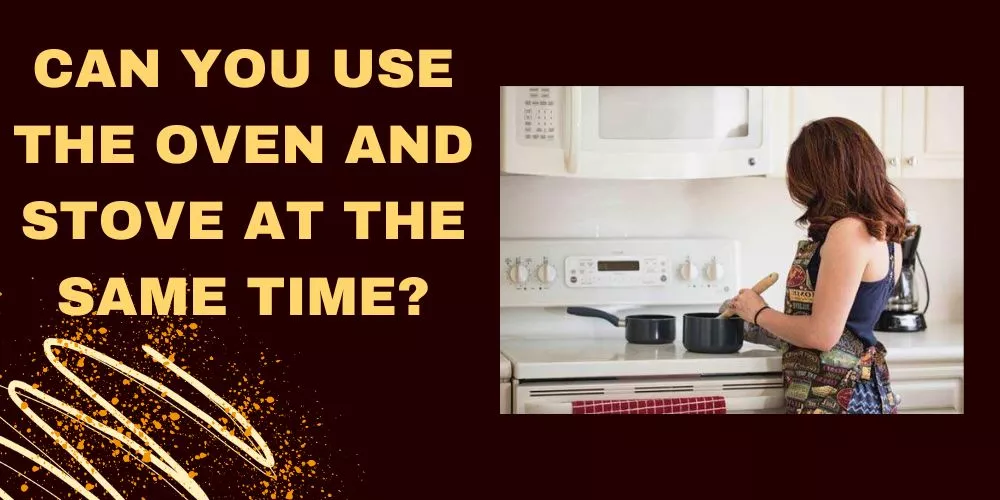Are you struggling to achieve that perfect sear on your steaks, or does your morning pancake lack that golden-brown hue? It might be that your Blackstone griddle isn’t reaching the temperatures needed for the best cooking results.
Whether it’s due to common operational mishaps or simple maintenance oversights, a Blackstone not getting hot enough is a chef’s bottleneck.
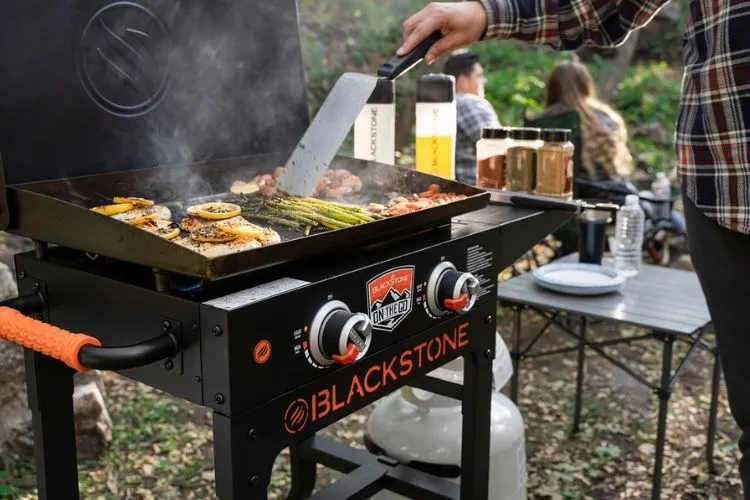
In this article, we’ll explore the potential reasons behind your griddle’s lukewarm performance and provide practical solutions to turn up the heat on your outdoor cooking game.
Reasons Your Blackstone Not Getting Hot Enough
Fuel issues, faulty equipment, griddle surface condition, blockages, and even the weather – all could be the perpetrators if your Blackstone griddle isn’t getting hot enough.
Familiarizing yourself with these potential causes is the first step towards troubleshooting.
This article delves into each issue, explaining their effect on griddle performance, and offering practical solutions to help you reclaim optimal heat for your culinary creations.
Low Propane Levels
Impact on Performance
When operating a Blackstone griddle, the right amount of propane is essential for achieving the necessary temperatures.
Propane levels that are lower than required cause a significant drop in the heat produced by the burners. This deficiency can result in undercooked food and a longer cooking time, undermining the griddle’s efficiency.
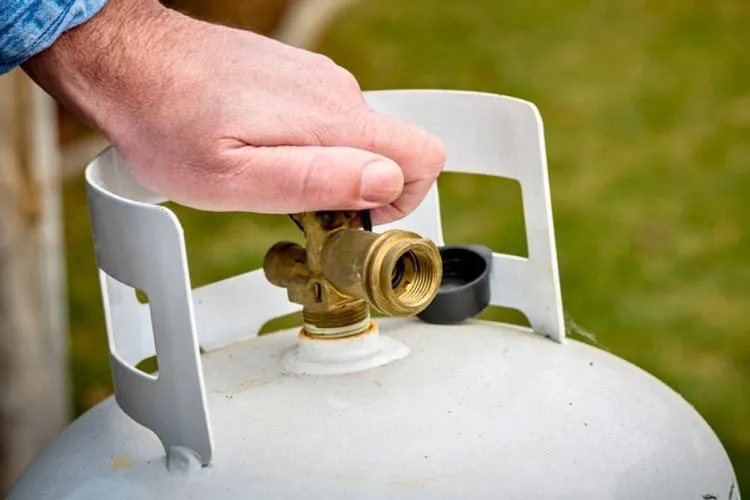
Inspection and Refilling Procedure
To ensure propane levels are sufficient:
- Check the Tank: Regularly inspect the propane tank’s gauge to monitor fuel levels. Some tanks are equipped with a built-in gauge, while others may require a separate weighing or level-indicating device.
- Refill as Needed: If the propane is running low, it needs to be refilled. This can be done at a local propane supplier. Always transport and store propane tanks in an upright position to avoid leaks.
- Consider a Spare Tank: Keeping a spare propane tank on hand will minimize downtime and ensure a continuous cooking experience.
Faulty Regulator
Diagnosing Regulator Issues
A malfunctioning regulator can cause a fluctuation in the gas pressure, leading to inconsistency in griddle temperatures. Common signs of a compromised regulator include hissing noises, visible damage, or an odor indicating a gas leak.
Maintenance and Replacement Steps
Here’s how to address regulator problems:
- Visual Inspection: Check for any signs of wear, tear, or damage. Hoses should be flexible without cracks, and connections should be secure.
- Leak Test: Apply a soapy water solution along the regulator hose and connections. Bubbles forming indicate a leak that needs addressing.
- Performance Test: If the griddle isn’t heating properly but there are no signs of leaks, it may be worthwhile to temporarily replace the regulator with a known good one to test if that resolves the issue.
- Replacing the Regulator: If the regulator is indeed faulty, it should be replaced. Purchase a replacement that matches the specifications of your griddle model from a reputable dealer. Disconnect the old regulator and attach the new one, ensuring that connections are secure and leak-free.
- Professional Assistance: If you are unsure about the condition of the regulator or the proper steps to replace it, seek professional assistance. Gas appliances can be hazardous if not handled correctly.
Regular monitoring of propane levels and regulator condition will maintain the efficiency and longevity of your Blackstone griddle. These proactive steps can help you enjoy the best performance from your griddle, avoiding the disappointment of insufficient heat and undercooked meals.
Griddle’s Surface Condition
Understanding the Impact
The condition of your Blackstone griddle’s surface plays a crucial role in its overall performance. Food build-up, grease, and rust not only hinder the smoothness of the cooking surface but also impair the griddle’s heat transfer efficiency. A compromised surface condition can lead to uneven heating and decreased effectiveness in cooking.
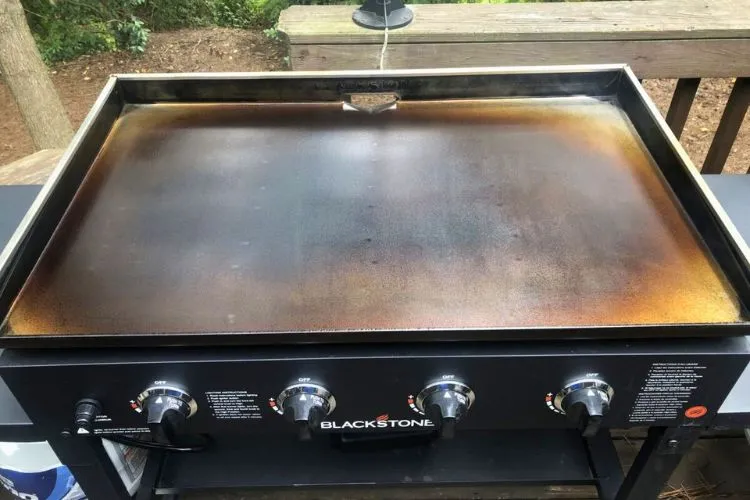
Maintenance and Care
To maintain your griddle’s surface condition:
- Regular Cleaning: After each use, allow the griddle to cool down. Using a metal scraper or spatula, gently remove any leftover food particles. For tougher residues, warm water can be used while the griddle is still slightly warm to help loosen the debris.
- Proper Seasoning: Applying a thin coat of cooking oil after cleaning and heating it until it smokes forms a protective layer on the griddle. This process, known as seasoning, not only prevents rust but also creates a non-stick surface over time.
- Rust Removal: If rust appears, it should be addressed immediately to prevent further damage. Use a grill stone or sandpaper to scrub the rust away gently. Afterward, clean the surface with warm water and re-season it.
- Protective Measures: To avoid future rust and residue build-up, always cover the griddle after it has cooled down and store it in a dry place.
Blocked Burner Holes
Recognizing the Problem
The efficiency of your Blackstone griddle can be notably reduced due to blocked burner holes. Grease, food debris, and rust can clog these holes, leading to an uneven flame distribution. Consequently, this obstructed gas flow compromises the griddle’s heating potential.
Clearing Blockages
Here’s how to maintain clear burner holes:
- Regular Inspection: Make it a routine to check the burners for any signs of blockage. Pay particular attention after intense cooking sessions that produce a lot of grease and debris.
- Cleaning Process: Turn off and disconnect the propane supply. Once the griddle is cool, remove the burners if possible to gain better access. Using a thin wire or a specialized burner-cleaning tool, gently clear each hole. For external cleaning, a soft brush can remove loose debris without causing damage.
- Avoiding Moisture: Moisture can lead to rust, which is another cause of blockages. Ensure the griddle and burners are completely dry after cleaning, and before storing, cover the griddle to protect it from the elements.
- Regular Maintenance: Incorporating burner inspection and cleaning into your regular grill maintenance routine can prevent sudden failures and maintain optimal heat distribution.
By diligently caring for the griddle’s surface and ensuring the burners remain unblocked, you preserve the integrity and performance of your Blackstone griddle. These practices not only contribute to the longevity of the griddle but also ensure that it remains ready for the ultimate cooking experience.
Ambient Temperature
Influence of Weather on Griddle Performance
Outdoor cooking is subject to the whims of the environment. When temperatures drop, it can be challenging for the Blackstone griddle to achieve and maintain the desired heat levels.
Windy conditions can cool the griddle’s surface rapidly, while rain not only affects the griddle’s surface temperature but can also pose a risk to the ignition system. Consequently, these factors combined can lead to a disappointing grilling experience with unevenly cooked food.
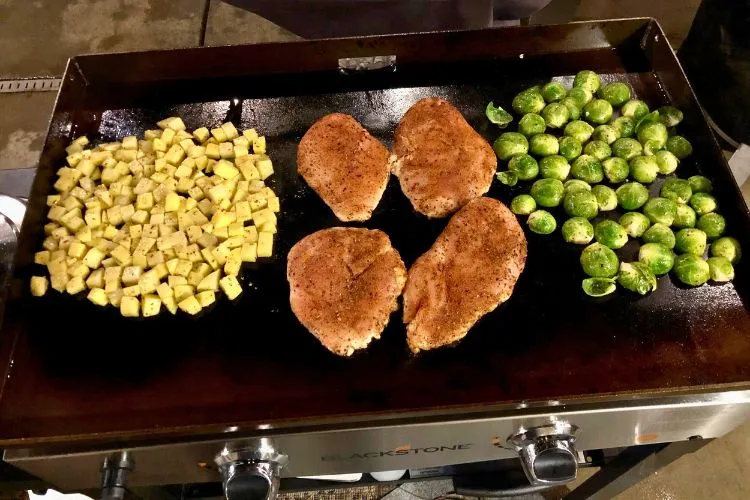
Mitigating Weather Effects
To combat environmental impacts:
- Using Wind Guards: Wind can dramatically affect the griddle’s burners. A wind guard can shield the flame from gusts, ensuring a consistent flame and temperature.
- Placement Strategies: Position your griddle in a spot that’s naturally sheltered from wind, where possible. A wall, fence, or even the strategic application of outdoor furniture can serve as effective windbreaks.
- Covering the Griddle: When not in use, especially during adverse weather, keeping the griddle covered can prevent rain from causing rust or damage. During cooking, covers or canopies designed for outdoor cooking can protect the griddle from precipitation.
- Preheating in Cold Weather: When the temperature is low, allow extra time to preheat the griddle. The steel needs time to absorb the heat in order to counteract the cold air’s cooling effects.
- Avoiding Extreme Conditions: Be mindful of the weather forecast. In cases of extreme cold, it might be best to postpone your grilling to a more favorable day.
Adapting to the ambient temperature ensures that your grilling experience remains unaffected by nature’s variables. Regular maintenance, coupled with strategic usage habits, can protect the griddle’s functionality and your satisfaction as a chef.
By being attentive to these strategies, you can ensure your Blackstone griddle delivers reliable heat to produce perfectly grilled foods, irrespective of the weather.
Other not so common reasons
Apart from the reasons mentioned, there are a few other factors that could affect your Blackstone griddle’s ability to heat up adequately. These include:
Insufficient Preheating Time
- Description: Many users underestimate the importance of preheating their griddle. For optimum cooking and heating performance, it’s crucial to allow your Blackstone griddle sufficient time to preheat to the recommended temperature.
- Solution: Ensure you allow enough time for preheating based on the guidance in your griddle’s manual. This can vary based on model and ambient conditions but typically ranges from 10 to 15 minutes.
Wear and Tear of Components
- Description: Over time, the components of your griddle, like the ignition system or the burners themselves, may wear out or degrade. This wear and tear can impact the efficiency of your griddle’s heating capacity.
- Solution: Regularly inspect your griddle for signs of wear and replace parts as necessary. Pay special attention to the ignition system and the burners.
Type of Propane Used
- Description: The quality of propane and the mixture of gases in your tank can also impact performance. Low-quality propane may not burn as efficiently, affecting the heat output.
- Solution: Ensure that you’re using a high-quality propane source. If you suspect your propane is the issue, trying a new tank from a reputable supplier can be telling.
Airflow Issues
- Description: Proper airflow is essential for maintaining a strong and consistent flame. Any obstructions in or around your griddle can disrupt this flow, leading to insufficient heat.
- Solution: Check around your griddle to ensure there’s nothing blocking the air intake or exhaust. Make sure your cooking area is well-ventilated but shielded from direct wind interference.
Altitude Adjustments
- Description: If you’re cooking at a high altitude, the reduced oxygen levels can affect the propane combustion process, leading to lower temperatures.
- Solution: Some griddles offer high-altitude kits or adjustments that can help mitigate these effects. Refer to the manufacturer’s guidelines for your specific model to adjust for altitude as needed.
Connector and Hose Issues
- Description: Sometimes, the issue lies not with the griddle itself but with the connectors or hoses that supply propane to it. Leaks, kinks, or blockages can restrict gas flow.
- Solution: Conduct regular leak tests using a soapy water solution, inspect hoses for kinks or damage, and ensure all connectors are properly tightened and free of debris.
Focusing on these additional aspects, along with the earlier mentioned factors, will greatly enhance the efficiency and performance of your Blackstone griddle. Regular maintenance and attentive use are key to ensuring your griddle is always ready for the perfect cookout.
Conclusion:
Troubleshooting a Blackstone griddle that’s not reaching desired temperatures involves examining a variety of factors, from propane levels and regulator functionality to the griddle’s surface condition and external environmental influences.
Regular maintenance, including thorough cleaning, appropriate seasoning, and part inspections, plays a pivotal role in ensuring consistent heat distribution and efficiency.
By addressing these common issues, from low propane levels to blocked burner holes and beyond, users can significantly improve their griddle’s heating capability, ensuring every meal is cooked to perfection on a reliably hot surface.

